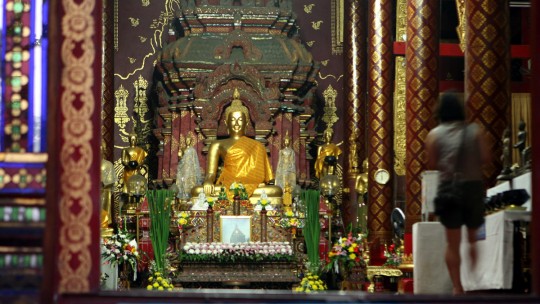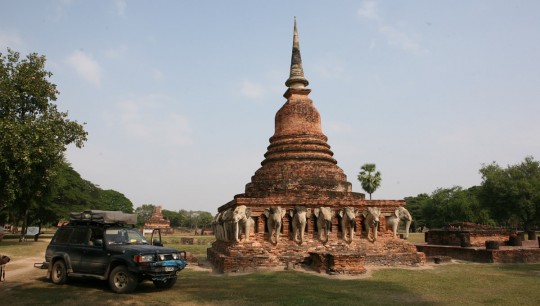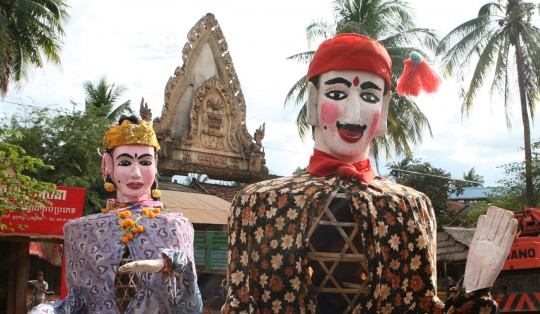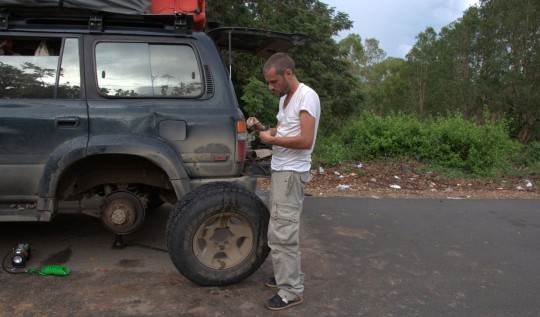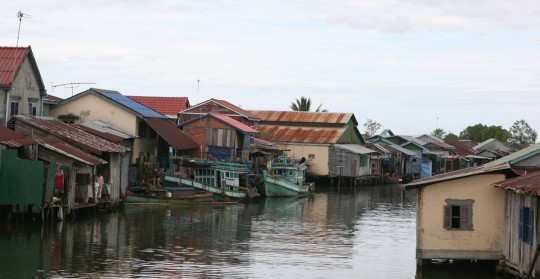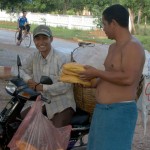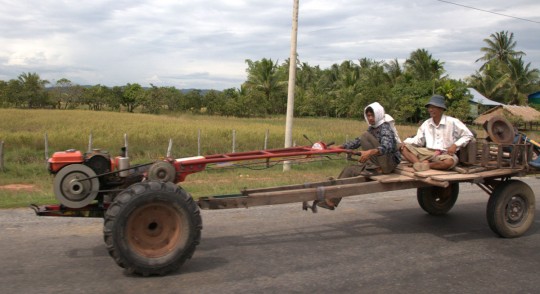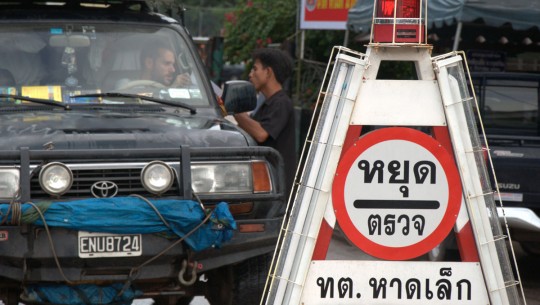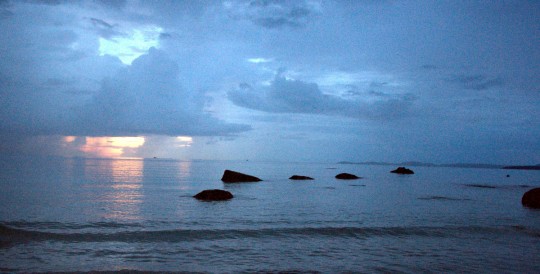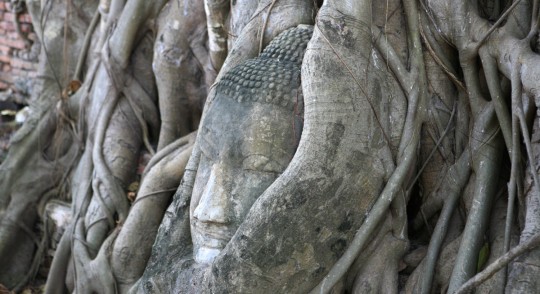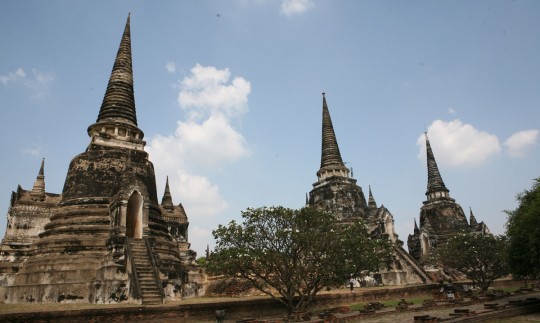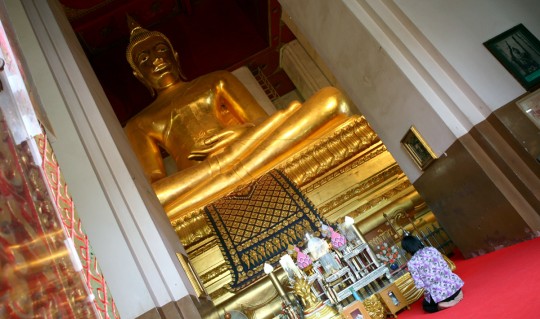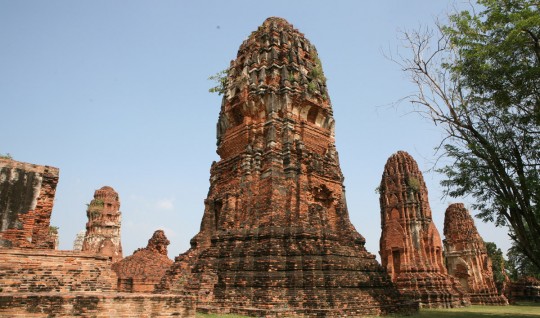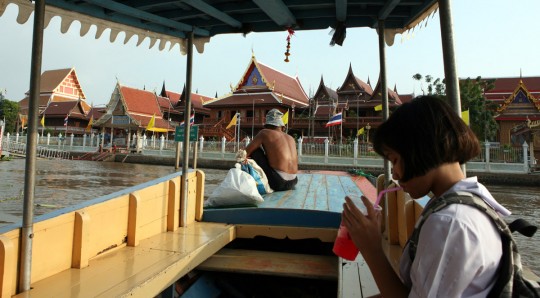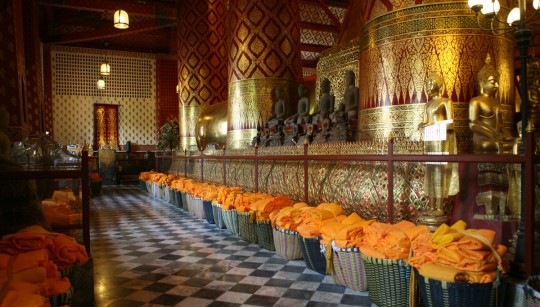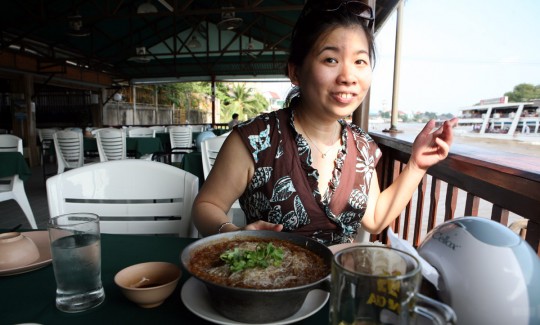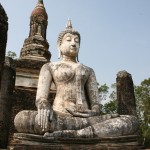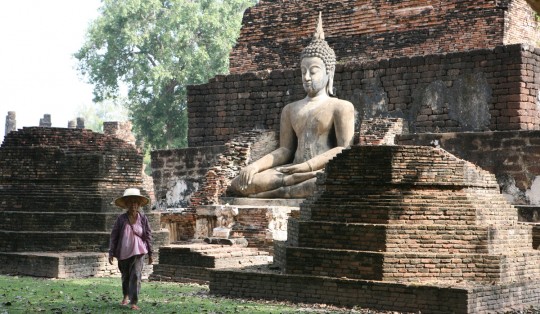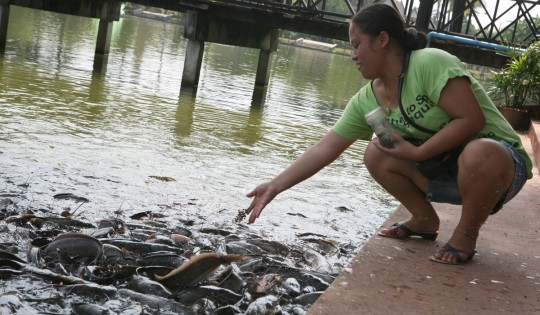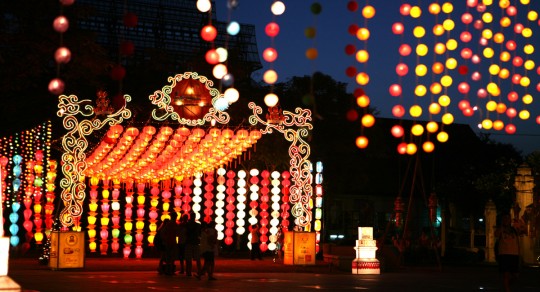
One recent evening while in Lampang, we decided we also deserved a Thanksgiving diner. The previous day we were denied entry in Myanmar (Burma), where we intended to spend few hours. It is impossible to go there with a vehicle, but officials of the country usually allow you to spend the day there, keeping your passport in the meantime.
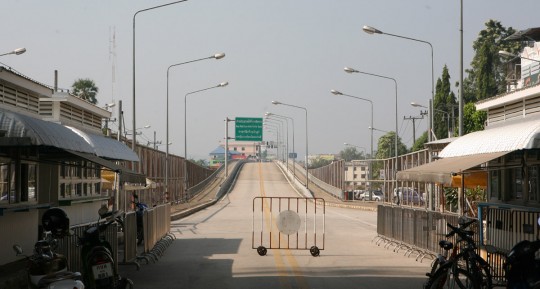
Unfortunately this particular crossing is closed since July as incidents with Karen fighters monopolize the attention of the government. It was still a nice drive through the mountains to get to Mae Sot, so we were happy to have done the trip. I spent the afternoon getting work done on the car, mainly changing the rear brake pads.
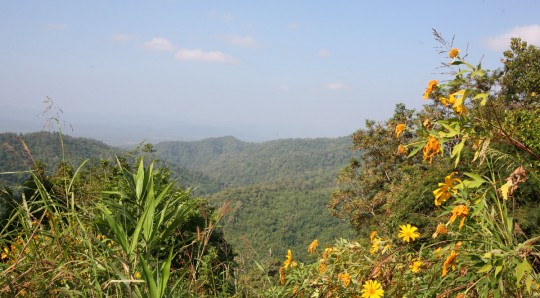
So we had to backtrack and arrived in Lampang hungry. I thought people back home would be interested in seeing some pictures of typical Thai dishes in these pages, so I will share this Thanksgiving menu with you. We decided to order many little things, served as appetizer in this particular restaurant, but usually found everywhere in the street.
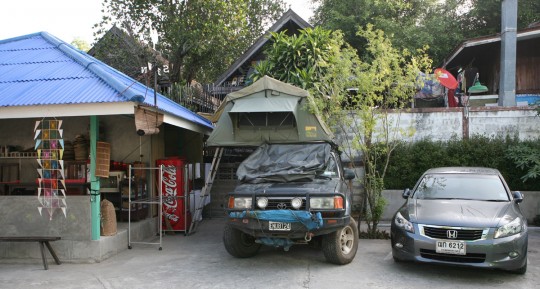
On our way to the restaurant, we bought cooked quails eggs, and when comfortably installed, we began the meal with classic pork spring rolls.
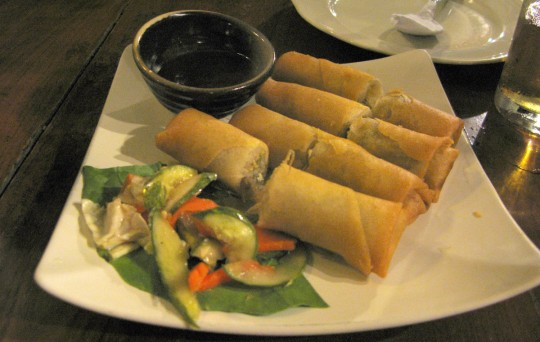
Then, the waitress placed in front of us a plate of bacon-wrapped chestnuts.
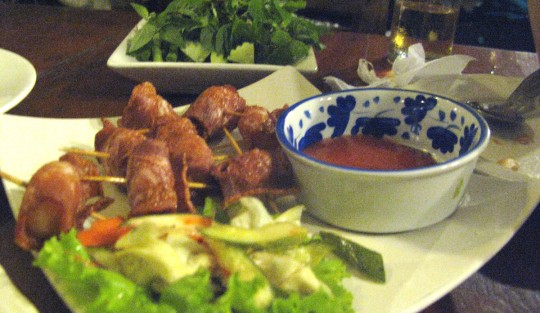
By then, unaccustomed to so much food, we were already thinking that maybe we should not have ordered so many dishes. But we carried on, emptying a bottle of Singha beer as a huge pot of rice was brought to us.
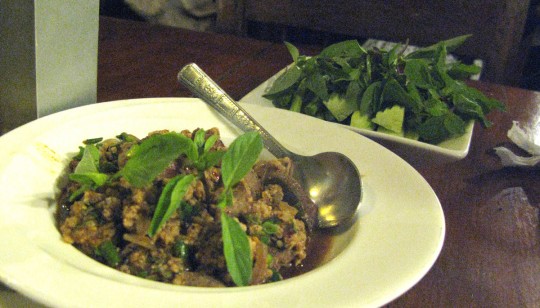
A specialty of the house was a particular plate of pork which I can’t remember the name. When I ordered, the waitress asked if we wanted it to be spicy, to wish I answered “Of course”. As the dish nearly killed us, I am not sure I would order it this way again.
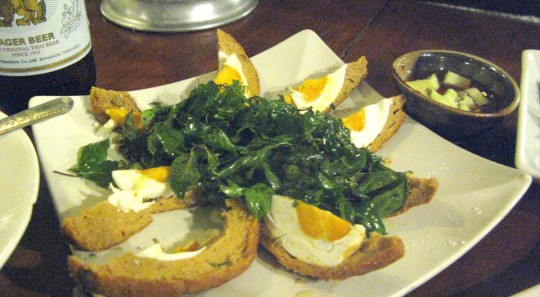
Another intriguing delicacy was the egg-stuffed fish cake. Very good, but by this time, it became difficult to continue stuffing our faces.
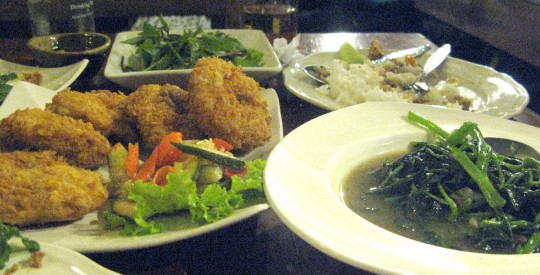
Then we got the famous morning glory, a Chinese influenced dish where the vegetable is flash-fried with garlic and chilli. By then Kathryn was not speaking anymore. Another order we got was shrimp puffs (left on the picture, look like donuts) which we kept for breakfast the following day. The complete meal was under US$20.
We dragged ourselves back to the tent where we slept like dead people. Regardless, in the morning we were ready to eat more and the shrimp puffs went down the hatch with strong coffee.
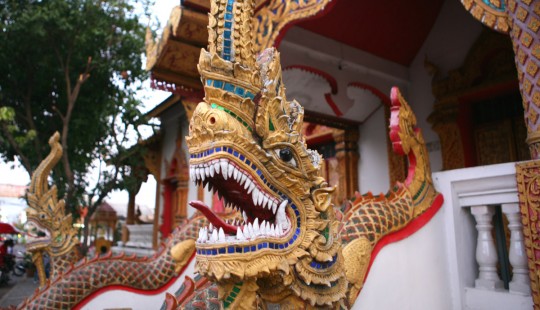
Only sixty miles separated us from our next destination, Chiang Mai. The second biggest city in the country, it is also a huge touristic destination. Westerners come from everywhere, and you can’t help but sometimes think that there are more white people than Thai in the Old City. Because it can be challenging to camp in large populated areas and be in the center of the action at the same time, we decided to take a room in a backpacker hotel (US$13 a day, Smile House). There we relaxed and toured the city.
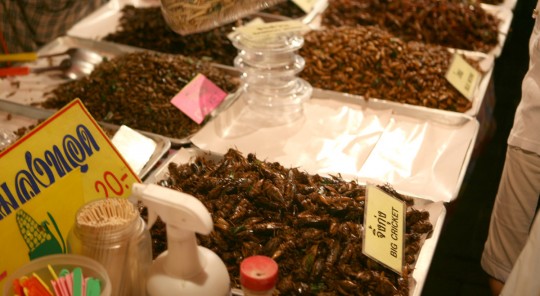
We were lucky enough to be in the city on a Sunday, day of a weekly big night market. Two days later, Kathryn took a flight back to Bangkok as I was getting ready to go back on the road. Exciting Laos is next, and it should be a more difficult destination. The first challenge will be to find a boat to cross the Mekong River with my truck.
